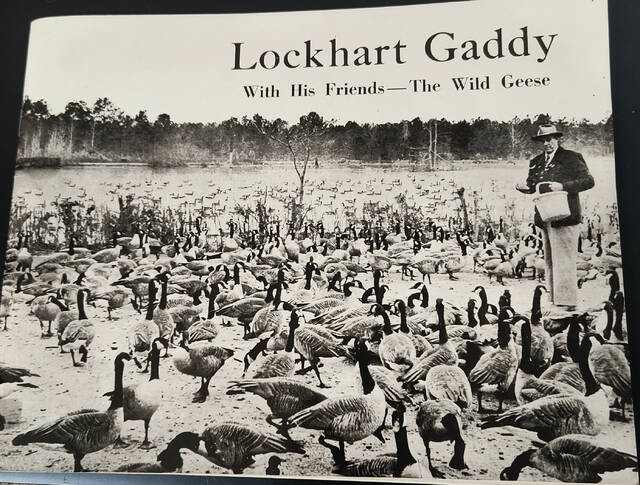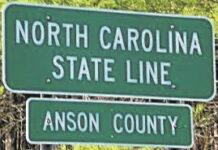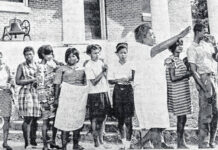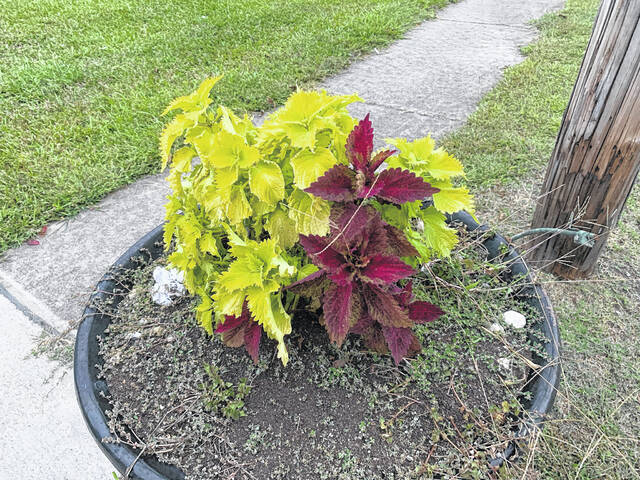
Lockhart Gaddy With His Friends the Wild Geese is a treasure trove of local tales and information about Gaddy Pond
Contributed courtesy of JD Bricken
ANSONVILLE — Tommy Pond remembers a time when not just geese, but people too, flocked to the shores of Gaddy Pond to experience an afternoon with the tamest geese south of Jack Miner Sanctuary in Ontario, Canada, where Canadian Geese are banded and their journey’s tracked.
The idea for Gaddy Pond started way back in the early 1930s as a labor of love; originally constructed to be a fishing hole for Lockhart Gaddy’s mother-in-law, Mrs. Pat Ross, the mother of Mrs. Hazel Gaddy.
Pond remembers it took two summers of hard work for Mrs. Ross to finally have her fishing spot. In the 1930s, the tools of the day were mule drawn drag pans combined with good old fashioned hand labor and elbow grease.
By the time the pond was filled in 1934, hunting geese with live decoys had coincidentally become illegal, so Mr. Lockhart Gaddy relocated six Canadian geese he had been using as live hunting decoys to the pond. The following fall, nine Canadian geese joined the former decoy geese at Gaddy Pond.
Starting with a bevy of 15, Canadian geese by the thousands soon began flocking to Ansonville in the fall. According to Pond, every year their numbers swelled. Pond says it took close to five years for Gaddy Pond to mark 100 geese in its ranks.
Pond adds, “I think by late 1946 we must have had close to 5 or 6,000 geese.”
Going from hunting geese to protecting them, Lockhart Gaddy expanded the pond about ten times its original size in 1952 out of necessity. By then, roughly 10,000 geese were flying down from Canada for the winter.
After Ansonville got a telephone, Pond remembers calling long-distance to Cananda. “From the time the geese left Jack Miner’s place, you could track them, it took three days or less before you would start seeing them locally.”
Pond remembers it was difficult to always keep a good accounting of the geese that visited, but he knows at one time they counted upwards of 18,000 geese. “I think on average we must have had about 10,000.”
A member of the Gaddy family, Pond says, “I lived in Charlotte up until 1957. I came to Ansonville in the fall of 1957, but I worked with geese all my life.” From 1957-58 Pond says he lived with his great-aunt who ran Gaddy Pond. In 1958, Pond’s parents followed him from Charlotte to Ansonville.
He credits his early involvement in the family passion for cultivating in him a lifetime love of waterfowl.
“Not very many people get to experience getting to know the geese. It is a treasure all its own to be allowed in their world.”
Pond knows geese so well he can tell when they are ready to migrate, sometimes even pegging their departure within hours-just by the change in the sounds they make when communicating with each other.
Looking over postcard memorabilia he retains from Gaddy Pond’s former heydays, Pond points to an image of one handsome young man. Grinning, he says, “That’s me in that picture right there. I guess I was about in high school then. I’ve got my bucket, so I reckon I was feeding the geese.” He continued, “My senior year they consolidated all the schools into Anson High School. The first graduating class was in 1961- I was in that class.”
He says area hunters liked to tell tales about trying to shoot the geese when they would fly away from Gaddy Pond, only to find they were too smart to be shot. Pond said “Gaddy geese” knew to fly high too high for the bullets to reach and then drop, all -of- a-sudden like, into the safe, tranquil water of Gaddy Pond.
Pond says, “You know, if geese aren’t killed, injured, or trapped they live about 75 years. Geese mate for life.”
Growing up on the pond, he fondly remembers afternoons that were so busy he couldn’t keep track of how many visitors Gaddy Pond had in a day. He recalls admission prices for adults at .50 and .25 for children. Working the gate back in the day, Pond says there were two roads leading into Gaddy Pond- one coming from Wadesboro and the other from Ansonville. “On Sundays it was non-stop. You didn’t get a break,” explains Pond, who added they had two attendents for each gate.
“You know it was Gaddy Pond and the geese that put Ansonville on the map,” says Pond. “We kept a registry. I know one afternoon, Sunday afternoon was always our busiest time, we had people who came from over 40 different countries,” he recalls with a smile. On another Sunday afternoon back in 1948, he says Gaddy Pond recorded 4,000 signatures on its registry. In addition to visitors from across the world over, he says local schools also came to tour the pond; learning about and feeding the geese.
A day at Gaddy Pond meant time with family and neighbors, and offered a chance to make new friends. Pond says a little souvenir store stood on site. The store sold snacks, cold drinks, souvenirs, and one-pound metal coffee cans filled with corn for guests to purchase for .10 and feed the geese.
“Gaddy geese would come right up and eat right out of your hand. They wouldn’t come up to you anywhere else but at Gaddy Pond.”
Lockhart Gaddy’s Wild Geese Refuge became so well-known and beloved for the special haven it provided for the geese; they became synonymous with the area. Gaddy Pond closed to visitors in 1975 due to a dwindling geese population. As an ever-present reminder, the image of a geese now graces official town logos, such as on the “Welcome to Ansonville” sign.
Recognition of Gaddy Pond led to the establishment of the Pee Dee Wildlife Refuge in 1963. Located on 8,500 acres, the Wildlife refuge snakes along the Pee Dee River.
A memory that still evokes a collection of emotions in Pond, not the least is amazement after all these years, is the passing of Lockhart Gaddy.
While tending to his geese, the elder Gaddy suffered a heart attack and passed away February 19, 1953. His graveside marker is shrouded by woods, tucked away a short distance from the pond he loved so much.
Pond recounts in tones of awe, “Something the geese never did was go in a wooded area. They always want those open spaces. When they had the service and everyone left, those geese went into them woods and climbed up on his marker.”
He remembers instead of the geese usual chatter that day, the birds gathered solemnly around the grave after all the people left and observed their own moment of silence for their fallen human patriarch.
In tribute, when Gaddy died North Carolina closed its offices across the state.
Pond says of Ansonville’s forgotten treasure, “One of these days I’m not going to be here. I’m the last- my parents are gone, the people who worked there are gone, and the people who visited there are soon to be gone. There is no one left to provide the historical record of the place, how it got started, and why it closed.”
Located at the Anson County Historical Society is a copy of Life magazine’s 1950 article about Gaddy Pond. For those interersted in learning more, Gaddy Pond lore has been forever encapsulated in the book “Lockhart Gaddy: With His Friends the Wild Geese,” compiled by his wife, Hazel Gaddy, and published in 1954.



